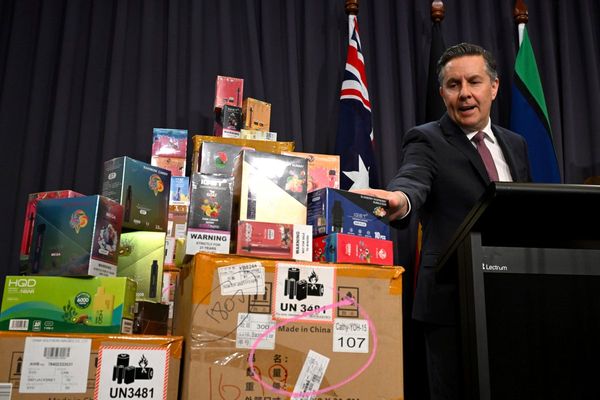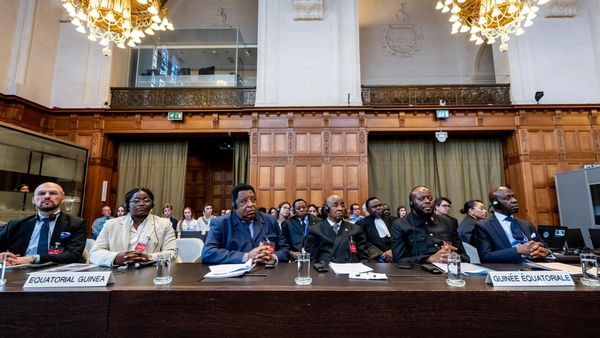
It certainly sounds like an exciting concept: the first ABC TV/Netflix co-production, set in Australia’s ultra-secretive spy facility. And then the show starts. As Guardian Australia reported earlier this week, a real-life former employee of the titular station, David Rosenberg (who worked at Pine Gap for 18 years) was present on set as a consultant, keeping mum about classified matters but advising the director Mat King on issues such as decor and dialogue.
Perhaps the director and writers/co-creators Greg Haddrick and Felicity Packard could have spent less time tweaking sterile-looking sets and humdrum conversations and more time flexing their imagination. A group of buttoned-down people staring at screens and discussing what they see ad infinitum may be a realistic depiction of the central location, but my kingdom for a patina of dramatic intrigue – or something, anything, to energise an agonisingly dull and inert production.
This soporific six-part series can be most charitably interpreted not as film-making per se, but scientific advancement: specifically, an attempt to cure insomnia. The premiere of the first couple of episodes on the big screen at the Adelaide film festival only inflated the sense of disappointment, given there is nothing remotely cinematic about the drama – which involves great amounts of yakkety yak interspersed with occasional scenes of bonking.

Backgrounding the story is a discussion of the longstanding US/Australian alliance, represented through Pine Gap’s mixture of Australian and American intelligence officers. Early in the piece we see footage of a smoothly spoken and careful-sounding US president, which of course puts the show out of whack with reality in the age of Donald Trump.
The drama hovers around the base’s Operations Floor. The Pine Gap team attempt to identify (cue more staring at screens) the culprits who shot down a civilian plane over the Apec summit in Myanmar, with the visiting Australian prime minister and US president nearby. A squabble about who did it and why leads to changes in staff at the base, including the appointment of a new mission director (Stephen Curry).
Key characters include Gus (Parker Sawyers) – an American who is frustrated by his job (fair enough: what a soul-sucking place to work) – and Jasmina (Tess Haubrich), an Australian communications analyst who got into intelligence because “the world’s a dangerous place” and “I want to do my bit.” Her “bit” involves, like most of the characters in this film, narrating the contents of screens displaying maps, spreadsheets and squiggly lines representing sound files.
On the executive floor, Steve Toussaint and Jacqueline McKenzie attempt and fail to deliver dramatic gravitas, their conversations encompassing political manoeuvring, staff promotions/demotions and the possibility of a mole.

None of the cast look like stressed-out vitamin D deprived analysts; they look like they’ve recently hit the beach. Lines such as “this is not a test” and “it’s armed” are delivered with painful calmness, even nonchalance. These people are calm-under-fire professionals, sure – but you just want to grab them, shake them, yell at them, slap them in the face with a cold fish ... anything to give this show a sense of energy or urgency.
Inspired by the visually audacious (and in every way superior) TV series Mr Robot, the director frames many shots unconventionally, often off-centre with actors unusually close to the borders of the frame, with lots of space around them. In Mr Robot this had a psychologically displacing effect, feeding into a sense of vulnerability and unease cleverly tied to the story’s themes and arc. Here, the technique comes across as amateurish. It exacerbates the feeling that we are isolated from the action, already felt in the show’s reluctance (perhaps budget limitations played a part in this) to cut to on-the-ground scenes detailing locations observed by the characters from thousands of kilometres away.
If audiences are still awake after the first, double episode of Pine Gap that premieres this Sunday on ABC, they might like to cleanse their palates by watching the 2016 film Eye in the Sky, a thrilling examination of drone warfare and the moral complexities of modern combat.
Perhaps Pine Gap’s crowning achievement is its message that even places that seem conceptually exciting – like spy bases – can in fact be extremely boring. Realistic? Sure. But it doesn’t exactly make for rousing drama.
• Pine Gap is showing on ABC TV on Sunday 14 October at 8.30pm







